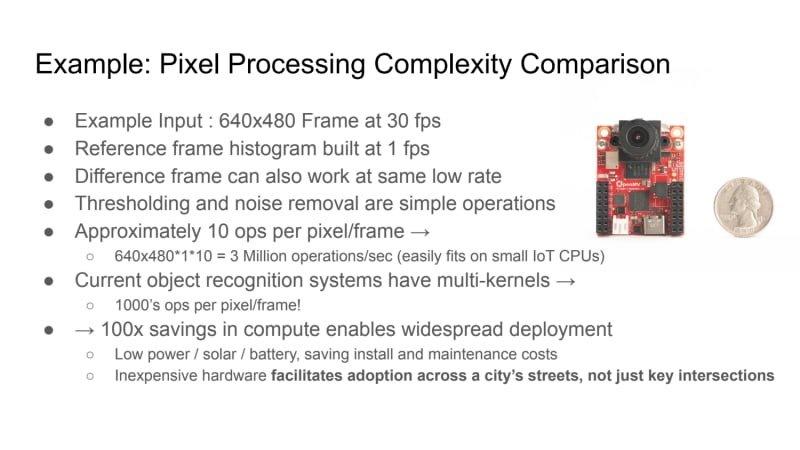

The Transensys Multi-Modal Traffic Detection System aims to dramatically improve traffic congestion issues seen worldwide. The amount of time humans spend on roadways represents a significant portion of our daily lives; we have become so accustomed to it that we don’t even question it. A significant percentage of this time is spent waiting at traffic lights. In the US alone, around 306,000 hours are spent daily by US residents at traffic lights. Every 2.53 days, 1 metric ton of carbon emissions is released from cars idling at traffic intersections (Source INRIX and US Bureau of Transportation Statistics).
Current systems to detect traffic are complex, costly, and inaccurate. The most common systems today are induction loop sensors. These are installed under roads, are tedious to maintain, suffer from errors, and are limited to only major intersections due to the cost. Attempts have been made to implement camera-based and long-wavelength infrared (LWIR) traffic detection. While these systems have been productized and deployed in a few areas, they have not seen widespread adoption due to cost and accuracy issues.
The Transensys Multi-Modal Traffic Detection System is our attempt to provide widespread, low-cost, and accurate traffic measurement, dramatically reducing intersection wait times, thus providing huge benefits to people and the environment. The system is based on a key computer vision algorithmic innovation coupled with low-cost sensors (camera and LWIR). The core advantage the system has is based on a novel modal reference frame calculation algorithm that we are in the process of patenting. We have a working prototype for this (see video demonstration). Unlike complex systems today that rely on compute-heavy AI and object detection for traffic identification, the modal algorithm flips the problem around. The problem is transformed into one that involves detecting a reference frame across video frames. Each pixel in a frame gets a reference value by finding the most common pixel value across adjacent frames. The algorithm is deceptively simple and extremely powerful. Once a reference frame is identified, complex object detection is no longer required. Each incoming video frame is simply subtracted from the reference frame, and a traffic density calculation can be performed. The computation cost requirements are reduced by over two orders of magnitude accordingly and low power consumption facilitates solar battery operation.
The software algorithm is paired with cost-effective IoT (Internet of Things) hardware components. These include both a camera and long-wavelength IR. The retail cost (e.g., openmv.io) of these components is around $250 and can be reduced much further with mass production and custom embedded design. As mentioned earlier, systems using cameras and IR have been attempted but have only seen limited adoption because of the complex technology processing needs and prohibitive cost. The usage of the novel reference frame calculation dramatically reduces cost and power while improving accuracy, facilitating what we believe will be widespread adoption. The optimization of traffic flow through all traffic lights compared to a select few will yield massive savings of driver time and carbon emissions.
Video
-
Awards
-
 2024 Automotive/Transportation Category Winner
2024 Automotive/Transportation Category Winner -
 2024 Top 100 Entries
2024 Top 100 Entries
Like this entry?
-
About the Entrant
- Name:Tyson Thomas
- Type of entry:teamTeam members:
- Aditya Kurupati
- Patent status:patented





